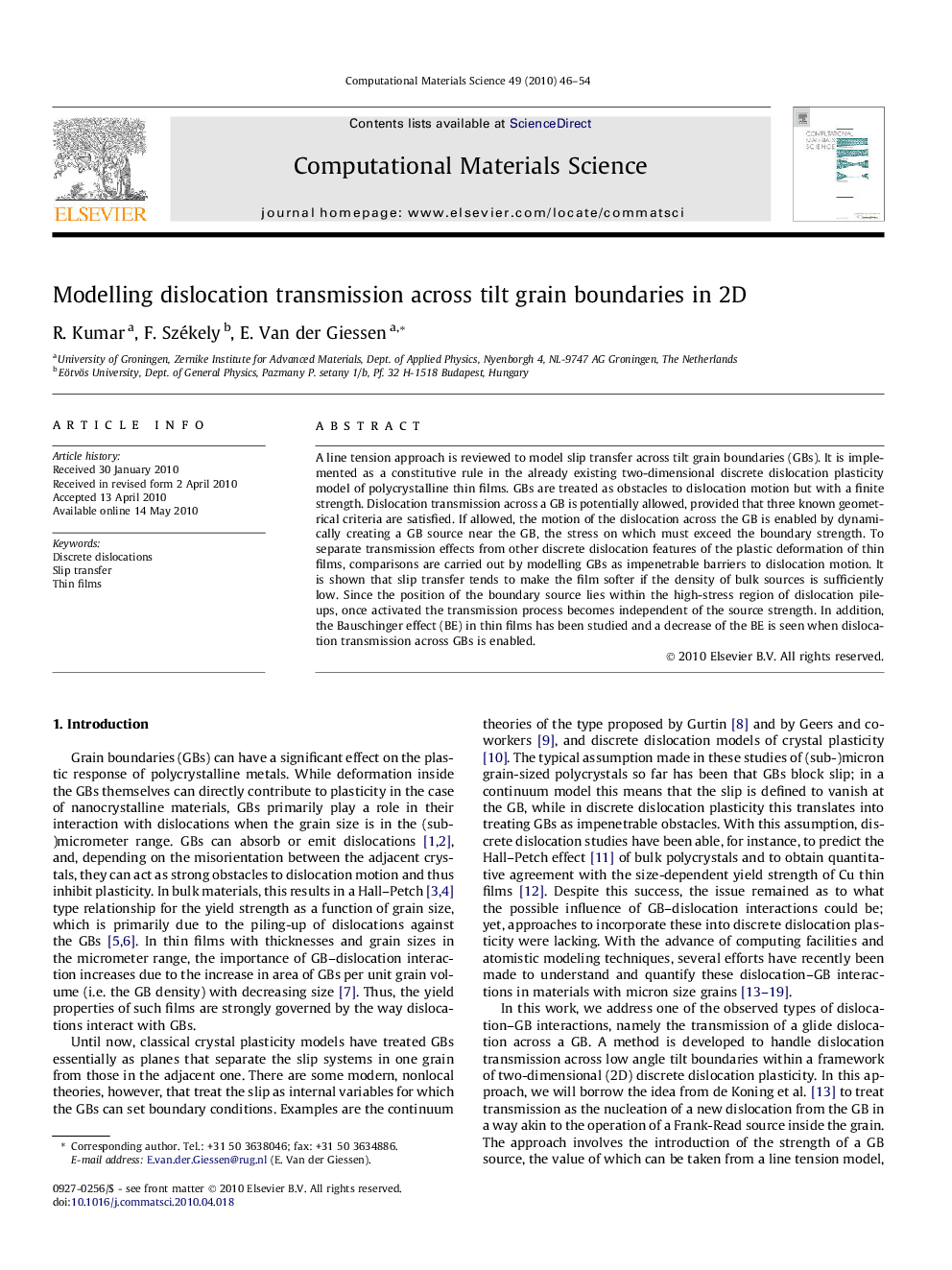| Article ID | Journal | Published Year | Pages | File Type |
|---|---|---|---|---|
| 1562684 | Computational Materials Science | 2010 | 9 Pages |
A line tension approach is reviewed to model slip transfer across tilt grain boundaries (GBs). It is implemented as a constitutive rule in the already existing two-dimensional discrete dislocation plasticity model of polycrystalline thin films. GBs are treated as obstacles to dislocation motion but with a finite strength. Dislocation transmission across a GB is potentially allowed, provided that three known geometrical criteria are satisfied. If allowed, the motion of the dislocation across the GB is enabled by dynamically creating a GB source near the GB, the stress on which must exceed the boundary strength. To separate transmission effects from other discrete dislocation features of the plastic deformation of thin films, comparisons are carried out by modelling GBs as impenetrable barriers to dislocation motion. It is shown that slip transfer tends to make the film softer if the density of bulk sources is sufficiently low. Since the position of the boundary source lies within the high-stress region of dislocation pile-ups, once activated the transmission process becomes independent of the source strength. In addition, the Bauschinger effect (BE) in thin films has been studied and a decrease of the BE is seen when dislocation transmission across GBs is enabled.
